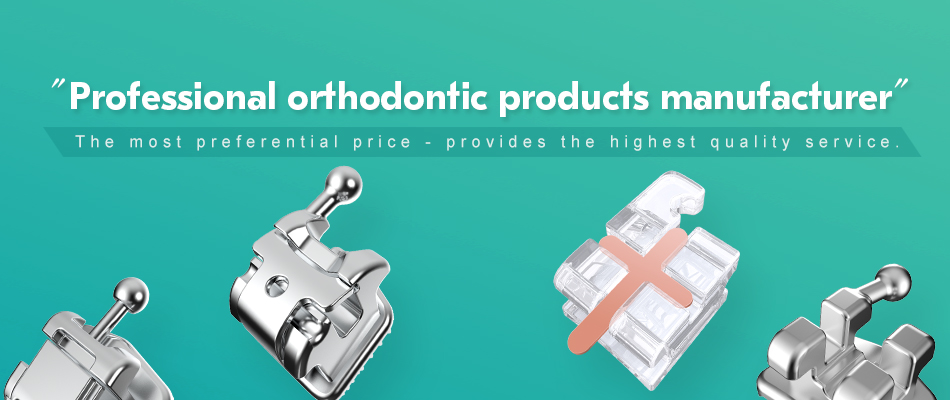Many clinics evaluate new technologies. Is upgrading to Orthodontic Self Ligating Brackets a financially sound decision for your practice? This strategic choice impacts your daily operations and patient care. You need a clear understanding of all costs and benefits involved.
Key Takeaways
- Self-ligating brackets cost more at first. They save money later by cutting down on supplies and patient visit times.
- Switching to these brackets can make your clinic run better. You can see more patients and make them happier with faster, more comfortable visits.
- Calculate your clinic’s specific ROI. This helps you see if the new brackets are a good financial choice for your practice.
Understanding Orthodontic Self Ligating Brackets
What Are Self-Ligating Brackets?
You are familiar with conventional braces. These systems typically use small elastic bands or thin steel wires. These components hold the archwire securely within each bracket. Self-ligating brackets, however, operate on a different principle. They feature a unique, built-in clip or door mechanism. This clip directly secures the archwire into the bracket slot. It completely eliminates the need for external ligatures. This innovative design creates a lower-friction system. It allows the archwire to move more freely through the bracket. This is a fundamental distinction from traditional bracket systems you currently use.
Manufacturer Claims for Self-Ligating Brackets
Manufacturers often highlight several significant benefits for Orthodontic Self Ligating Brackets. They claim these systems substantially reduce friction between the bracket and the archwire. This reduction in friction can potentially lead to more efficient and faster tooth movement. You might also hear about fewer and shorter patient appointments. This directly translates into saving valuable chair time for your clinic. Manufacturers also suggest improved patient comfort throughout the treatment process. Furthermore, they emphasize easier oral hygiene. The absence of ligatures means fewer areas for food particles and plaque to accumulate. This contributes significantly to better overall cleanliness and gum health during orthodontic treatment. These compelling claims form the primary basis for many clinics considering a strategic switch.
The Cost of Adopting Self-Ligating Brackets
Switching to a new orthodontic system involves several financial considerations. You must evaluate these costs carefully. They represent your initial investment.
Initial Purchase Costs of Orthodontic Self Ligating Brackets
You will find that self-ligating brackets typically carry a higher per-bracket cost. This is true when you compare them to conventional brackets. Manufacturers invest more in their advanced design and specialized mechanisms. This increased manufacturing complexity translates into a higher unit price. You must budget for this difference. Consider the specific brand and material you choose. Different manufacturers offer various systems. Each system comes with its own price point. For example, ceramic self-ligating brackets often cost more than metal ones. You will also need to purchase a sufficient initial inventory. This ensures you have enough brackets for your first set of patients. This bulk purchase represents a significant upfront expenditure for your clinic.
Staff Training and Education Expenses
Adopting a new system requires proper training. Your orthodontists and dental assistants will need to learn the new techniques. This includes bracket placement, archwire engagement, and patient education. You can choose from several training options. Manufacturers often provide workshops or online courses. These programs teach the specifics of their self-ligating systems. You might also send staff to external seminars. These events offer hands-on experience. Each training method incurs costs. You pay for course fees, travel, and accommodation. You also account for staff time away from the clinic. This time means less patient care during training days. Proper training ensures efficient use of the new brackets. It also minimizes errors.
Inventory Management Adjustments
Your inventory management will change. You will no longer need to stock elastic ligatures or steel ties. This eliminates a recurring material cost. However, you now manage a new type of bracket inventory. You must track different sizes and types of self-ligating brackets. Your ordering process will adapt. You might need new storage solutions for these specialized brackets. During the transition period, you will manage two distinct inventories. You will have your existing conventional brackets and the new Orthodontic Self Ligating Brackets. This dual inventory requires careful planning. It ensures you always have the correct materials on hand for every patient.
Quantifiable Benefits and Operational Efficiencies
Switching to self-ligating brackets offers your clinic many tangible advantages. These benefits directly impact your bottom line and daily operations. You will see improvements in efficiency, patient satisfaction, and overall practice growth.
Reduced Chair Time Per Patient
You will notice a significant reduction in the time patients spend in your chair. Traditional braces require you to remove and replace ligatures at each adjustment. This process takes valuable minutes. Self-ligating brackets feature a built-in clip or door. You simply open this mechanism, adjust the archwire, and close it. This streamlined process saves several minutes per patient during routine appointments. Over a day, these saved minutes add up. You can then see more patients or allocate staff time to other critical tasks.
Fewer and Shorter Patient Appointments
The efficiency of self-ligating systems often leads to fewer required appointments. The low-friction mechanics allow for more continuous tooth movement. This can reduce the need for frequent adjustments. When patients do come in, their appointments are quicker. This benefits both your schedule and your patients’ busy lives. You can optimize your appointment book. This allows you to manage your clinic’s flow more effectively.
Improved Patient Experience and Compliance
Patients often report greater comfort with self-ligating brackets. The absence of elastic ligatures means less friction and pressure. This can lead to reduced discomfort after adjustments. Oral hygiene also becomes easier for your patients. There are fewer nooks and crannies for food particles to get trapped. This promotes better gum health throughout treatment. Happier patients are more compliant patients. They follow your instructions better, which contributes to smoother treatment outcomes.
Post time: Oct-24-2025


